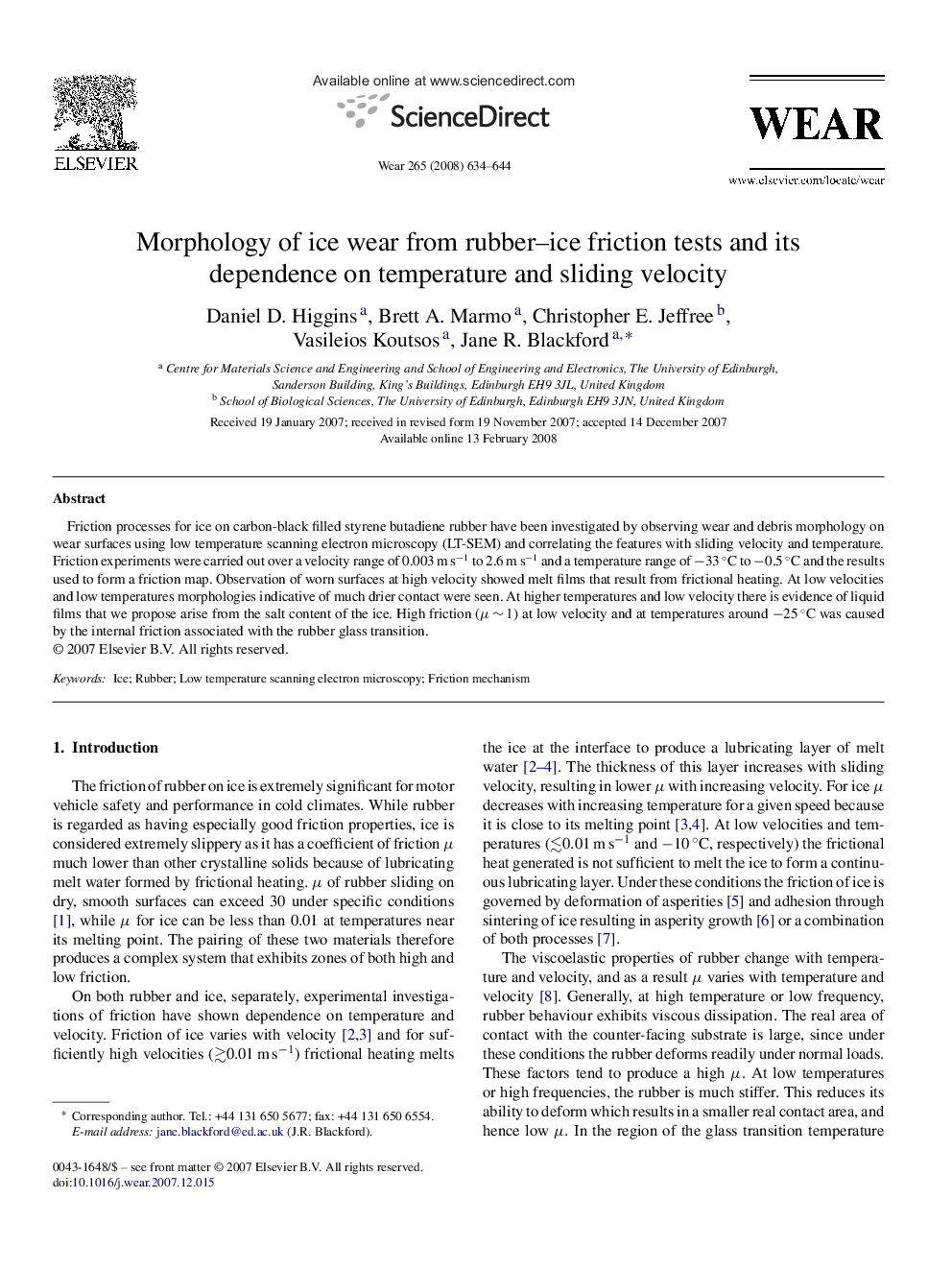| Article ID | Journal | Published Year | Pages | File Type |
|---|---|---|---|---|
| 619035 | Wear | 2008 | 11 Pages |
Abstract
Friction processes for ice on carbon-black filled styrene butadiene rubber have been investigated by observing wear and debris morphology on wear surfaces using low temperature scanning electron microscopy (LT-SEM) and correlating the features with sliding velocity and temperature. Friction experiments were carried out over a velocity range of 0.003 m sâ1 to 2.6 m sâ1 and a temperature range of â33 °C to â0.5 °C and the results used to form a friction map. Observation of worn surfaces at high velocity showed melt films that result from frictional heating. At low velocities and low temperatures morphologies indicative of much drier contact were seen. At higher temperatures and low velocity there is evidence of liquid films that we propose arise from the salt content of the ice. High friction (μ â¼Â 1) at low velocity and at temperatures around â25 °C was caused by the internal friction associated with the rubber glass transition.
Related Topics
Physical Sciences and Engineering
Chemical Engineering
Colloid and Surface Chemistry
Authors
Daniel D. Higgins, Brett A. Marmo, Christopher E. Jeffree, Vasileios Koutsos, Jane R. Blackford,
